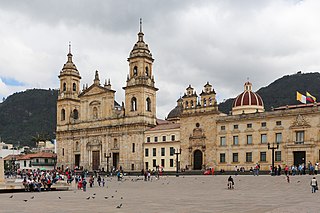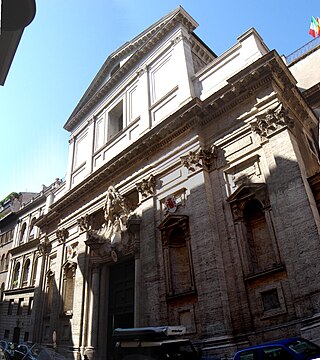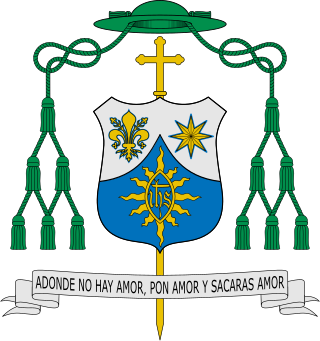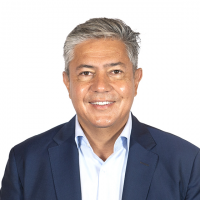Related Research Articles

Our Lady of Guadalupe, also known as the Virgin of Guadalupe, is a Catholic title of Mary, mother of Jesus associated with a series of four Marian apparitions to a Mexican peasant named Juan Diego and one to his uncle, Juan Bernardino, which are believed to have occurred in December 1531, when the Mexican territories were part of the Spanish Empire.

José Manuel Figueroa Sr., known professionally as Joan Sebastian, was a Mexican singer and songwriter. Born in Juliantla, Guerrero, he composed more than 1,000 songs, including compositions for artists such as Bronco, Vicente Fernández, Lucero, Pepe Aguilar, and Rocío Dúrcal. The first several years of his career were primarily focused on Soft rock and Latin pop songs, but later focused primarily on regional Mexican music, specifically banda, mariachi, and norteño. Throughout his career, he also recorded various country songs in Spanish. Sebastian was awarded seven Latin Grammy Awards and five Grammy Awards, making him the most awarded Mexican performer in Grammy history.

The Metropolitan and Primate Cathedral Basilica of the Immaculate Conception and Saint Peter of Bogotá or better known as the Metropolitan Cathedral Basilica of Bogotá and Primate of Colombia, officially Sacred Holy Temple Metropolitan Cathedral Basilica and Primate of the Immaculate Conception of Mary and Saint Peter, is a cathedral church of Catholic worship consecrated to the Immaculate Conception and under the patronage of Saint Peter; it is a Neoclassical style building located in the Plaza de Bolívar in Bogotá, the country's capital.

The Metropolitan Cathedral-Basilica of the Incarnation, is a Roman Catholic cathedral in the city of Granada, Spain. The cathedral is the seat of the Archdiocese of Granada. Like many other cathedrals in Andalusia, it was built on top of the city's main mosque after the reconquest of Granada.

Miguel Ángel Brindisi de Marco is an Argentine football coach and former player. An attacking midfielder, he played for the Argentina national team at the 1974 FIFA World Cup.

The Archdiocese of Santiago de Cuba is a Latin Church ecclesiastical jurisdiction or archdiocese of the Catholic Church in Cuba. It is a metropolitan see with four suffragan dioceses in its ecclesiastical province: Guantánamo-Baracoa, Holguín and Santísimo Salvador de Bayamo y Manzanillo.

The Spanish National Church of Santiago and Montserrat, known as Church of Holy Mary in Monserrat of the Spaniards is a Roman Catholic titulus church and National Church in Rome of Spain, dedicated to the Virgin of Montserrat. It is located in the Rione Regola, at the intersection of alleyway of Via della Barchetta and the narrow Via di Monserrato, with the facade on the latter street, about three blocks northwest of the Palazzo Farnese.

The Archdiocese of Mérida–Badajoz is a Latin Church ecclesiastical territory of the Catholic Church in Spain, created in 1255. Until 1994, it was known as the Diocese of Badajoz.

The Archdiocese of Brindisi-Ostium is a Latin diocese of the Catholic Church in Apulia, has carried its present name since 1986. It is a suffragan of the archdiocese of Lecce.

The Diocese of Oria is a Latin diocese of the Catholic Church in Apulia. It is a suffragan of the Archdiocese of Taranto.
Alonso de Reinoso (1518–1567) was a Spanish Conquistador in Honduras, Mexico, Peru and Chile. He was born in Torrijos Toledo, Spain in 1518. He was married to Catalina Flores de Riofrío before he came to the Americas in 1535.

The Royal Chapel of Granada is an Isabelline style building in Granada, Spain. Constructed between 1505 and 1517, it was originally integrated in the complex of the neighbouring Granada Cathedral. It is the burial place of the Spanish monarchs, Queen Isabella I and King Ferdinand, the Catholic Monarchs. Apart from these historical links, this building also contains a gallery of artworks and other items associated with Queen Isabella.

Parish of San José, located in the city of Antigua Guatemala, is part of the Archdiocese of Santiago de Guatemala and is located in a section of the old Primate Cathedral of Antigua Guatemala, which was destroyed by the 1773 Guatemala earthquakes. The first construction of the cathedral began in 1545 with the rubble brought from the destroyed settlement in the Almolonga Valley, which had been a second attempt to found a town in the region. Its complete construction was hampered by frequent earthquakes over the years. On April 7, 1669, the temple was demolished and a second sanctuary would be inaugurated in 1680 under the direction of Juan Pascual and José de Porres, there is also evidence that the Spanish engineer and image maker Martín de Andújar Cantos worked on its reconstruction.
Juan Bermudo was a Spanish Friar Minor who is best known as a composer, music theorist and mathematician.

The Palace of San Telmo is a historical edifice in Seville, southern Spain, formerly the Universidad de Mareantes, now is the seat of the presidency of the Andalusian Autonomous Government. Construction of the building began in 1682 outside the walls of the city, on property belonging to the Tribunal of the Holy Office, the institution responsible for the Spanish Inquisition. It was originally constructed as the seat of the University of Navigators, a school to educate orphaned children and train them as sailors.
Bernardino de Almansa Carrión was a Roman Catholic prelate who served as the Archbishop of Santafé en Nueva Granada (1631–1633) and Archbishop of Santo Domingo (1629–1631).
Miguel Holguín y Figueroa, also written as Miguel Holguín de Figueroa, was a Spanish conquistador. He took part in the expeditions of conquest of the Chitarero, Motilon, U'wa and Lache peoples led by Nikolaus Federmann. Holguín y Figueroa later settled in Tunja, where he protested the rapacious activities of Hernán Pérez de Quesada, governor of Bogotá.

Alberto Arturo Figueroa Morales is a Puerto Rican prelate of the Catholic Church. He has been bishop of the Diocese of Arecibo in Puerto Rico since 2022. He served as an auxiliary bishop of the Archdiocese of San Juan in Puerto Rico from 2019 to 2022.

Rolando Ceferino Figueroa is an Argentine politician, currently serving as a Governor of Neuquén Province since 10 December 2023. Hepreviously served as National Deputy elected in Neuquén. A member of the regionalist Neuquén People's Movement party until 2022, Figueroa was elected in 2021 and currently sits in the Provincias Unidas inter-bloc.
References
- ↑ Antonio Martín Moreno Historia de la música andaluza 1985 p154 "En el siglo XVI nos encontramos allí con nombres tan importantes como el de Bernardino de Figueroa, quien ingresó en 1518 y fue nombrado en 1551 arzobispo"
- ↑ Esses Dance and Instrumental Diferencias in Spain During the 17th and Early 18th Century p315